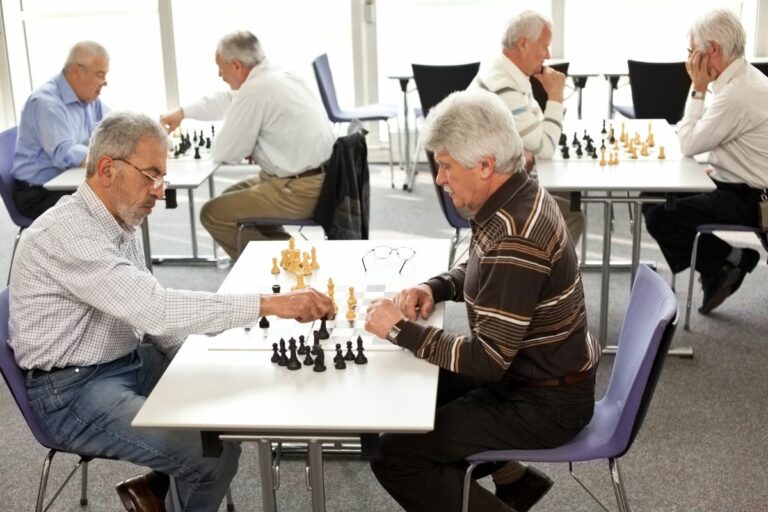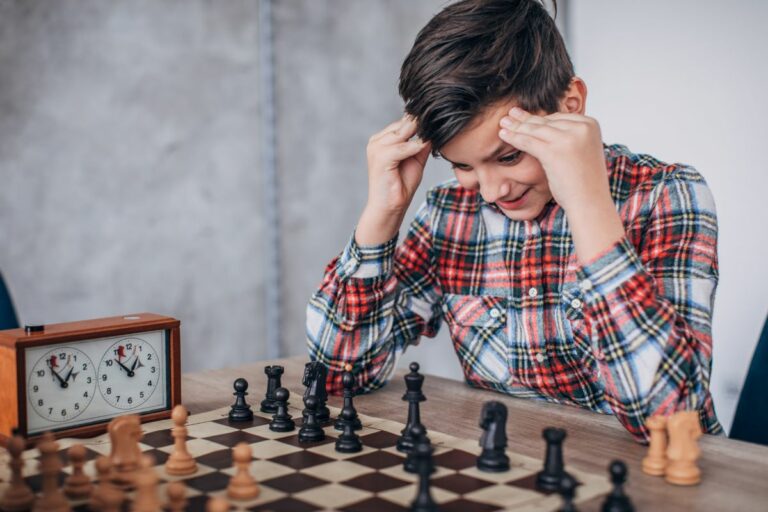What Is an Average Chess Rating? A Quick Guide
Chess ratings act as a universal measure of a player’s ability, helping to match opponents and determine eligibility for tournaments.
Whether you’re a newbie to the chessboard or an aspiring master, understanding the concept of average chess ratings is key to gauging your skills and tracking your progress.
So, what is an average chess rating? And do they differ from one system to another?
There isn’t a precise “average” rating in chess, as rating classifications are not universally standardized. Nevertheless, most players tend to fall within certain ranges, typically spanning from 1300 to 1500 in ELO ratings and 1300 to 1800 in USCF ratings.
Keep reading to learn more about the average chess rating and how it can vary according to the rating system.
What Is an Average Chess Rating?

A universally recognized average chess rating does not exist. However, if we were to compile a comprehensive global database of all chess players, we could determine an average rating, as is possible with any dataset.
It is important to note that this article focuses solely on standard ratings and does not delve into the rapid, blitz, or bullet ratings of players.
The Average Chess Rating in Different Systems
The rating system used in chess is similar to that employed in other professional games. Initially, players are assigned a certain rating at the beginning of their chess careers, which can subsequently improve or decline based on their performance.
Here’s a quick breakdown of the average rating in different systems:
Average FIDE Elo Rating
Chess expert and professor Arpad Elo developed the Elo rating system to assess a player’s comparative advantage over others in specific games, such as chess. Its purpose was to enhance the U.S. Chess Federation’s evaluation of competitors’ abilities.
In chess, an average Elo rating typically falls within the range of 1300 to 1500. This indicates that the player is considered decent and capable of winning matches with adequate strategies.
It’s worth noting that the aforementioned number is based on slightly older datasets, as FIDE has reduced the frequency of publicly releasing figures and numbers compared to previous years.
Nonetheless, it is reasonably safe to assume that the average rating has remained relatively stable over the past two decades.
If any significant changes were to occur in this average rating, it would most likely have happened in the past two years due to the surge in chess popularity fueled by the Netflix series “The Queen’s Gambit.” The influx of new players with lower ratings might have led to a slight decrease in the average rating, but the impact is expected to be minimal.
Average USCF Rating
According to publicly-released statements in 2014, the average USCF rating stands at 1400, which is the most recent figure available.

It is worth noting that USCF ratings tend to be generally 50 to 100 points higher than their FIDE Elo counterparts.
In the case of adult players, the average rating typically falls within the 1500s range. In graded tournaments, the average rating for adult participants spans from 1200 to 1900.
Statistical data indicates that 5% of rated players achieve the Expert level (2000), while only 1% reach the Master level (2200). The rating scale follows a linear structure.
In reality, the majority of players in adult clubs usually hold ratings between 1300 and 1800, with a few individuals, mainly younger players, possessing lower ratings. At large tournaments that attract 150 to 200 spectators, the most common sections are usually U1600 and U1800.
Average Online Ratings

Online ratings and over-the-board (OTB) ratings exhibit significant differences. While you can acquire an ELO rating online by winning matches, it never equates to your OTB rating in tournaments.
To put it into perspective, online ratings tend to include a higher proportion of casual players, thereby diluting the overall skill level. On the other hand, OTB players are more likely to be dedicated individuals who invest time in participating in in-person tournaments.
The term “confidence interval” is often used to better illustrate this concept. In essence, if you were to start using Chess.com, for instance, it can be reasonably stated that your ratings would fall within a wide range of 300 to 2100, accompanied by a significant rating deviation (RD) to account for uncertainty.
While playing, you might have a reasonable 95% certainty that your ratings lie between 1600 and 1700, indicating a lower RD. As you engage in more games, your RD gradually diminishes, and the algorithm progressively learns your specific range.
However, it’s important to note that determining a universally standard average rating across all online chess platforms is not feasible. Each platform has a rating system that applies to its users and a distinct user database.
For example, certain websites are known to primarily cater to amateur players, resulting in relatively lower average ratings. Comparatively, sites where grandmasters frequently participate tend to have higher average ratings.
- Chess.com: On Chess.com, the average rating is around 900, with the majority of players ranging between 400 and 1400. The rating system on Chess.com typically starts at 1200 and quickly adjusts to reflect your playing ability using the Glicko system.
- Chess24: Due to the rating system adjustments and the presence of rating inflation, the average ratings on Chess24 tend to fall between 1700 and 1900. These figures are generally higher compared to most other sites, as they can be up to 500 points higher than the average ELO rating.
- Lichess: For Lichess, the average player rating hovers around 1500, with no significant changes observed in this value over time. Notably, Lichess ratings often appear higher compared to other rating systems like FIDE or Chess.com, which typically commence at a rating of 1200.
The Average Chess Rating by Country
Russia boasts the highest rating in the world, with 2641 of the top 10 chess players. Following closely is the United States of America, with 828 players, and China takes the third spot with a total of 181 exceptional players.
Below is a table showcasing the average ratings of these prominent countries based on FIDE rankings:
| Country | Average Rating of Top 10 Players |
| Poland | 2637 |
| France | 2638 |
| Hungary | 2644 |
| Armenia | 2652 |
| Azerbaijan | 2652 |
| Ukraine | 2663 |
| India | 2668 |
| China | 2705 |
| USA | 2715 |
| Russia | 2739 |
Conclusion
In conclusion, average chess ratings provide valuable insights into the competitive landscape of the game. While there is no universal average, we have explored the common ranges in different rating systems.
Understanding average ratings can help gauge one’s progress and the level of competition. So, whether you’re a beginner or an experienced player, understanding the world of chess ratings can enhance your chess journey and add more excitement to the game.
If you did find this article helpful, please consider sharing, as it can help this little site grow 🙏







